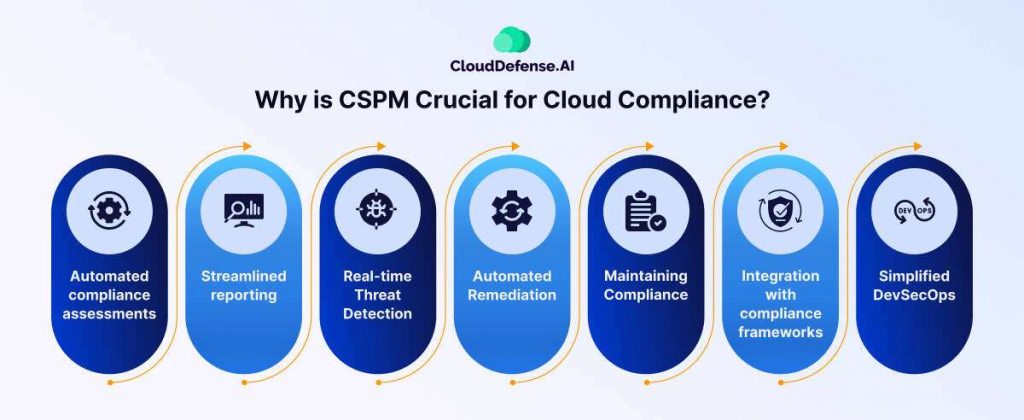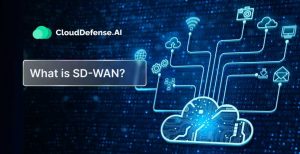Cloud Security Posture Management (CSPM) has become a must-have tool for organizations, making cloud security easier. But as the threat front and compliance regulations constantly evolve, a critical question arises: Is your current CSPM solution enough to keep pace with these ever-changing demands?
The answer, unfortunately, is often no. Today, simply “checking the box” for basic compliance is no longer sufficient. Organizations need a CSPM solution that goes beyond that, actively managing their security posture and mitigating real-world threats.
Having that said, this article explores the critical steps organizations can take to evolve their CSPM strategies for dynamic compliance requirements, ensuring not just “cloud security, simplified,” but “compliance, seamlessly managed.”
Understanding CSPM
What is CSPM?
According to Gartner, the industry leader who coined the term, Cloud Security Posture Management (CSPM) is a category of security products designed to automate security tasks and ensure compliance assurance in the cloud environment.CSPM tools function by meticulously examining and comparing your cloud setup against a defined set of best practices and known security vulnerabilities.
In essence, CSPM acts as a comprehensive security suite for your cloud environment, encompassing both practices and strategies to safeguard your data and resources. It’s important to understand that CSPM represents an evolution beyond the Cloud Infrastructure Security Posture Assessment (CISPA).
While CISPA primarily focuses on basic monitoring, CSPM incorporates various levels of automation to deliver a more robust security posture. This enhanced functionality allows you to leverage CSPM for a wider range of tasks extending beyond basic monitoring to incorporate various automation levels.
Why is CSPM Important?
Studies from Gartner indicate that implementing a CSPM solution can reduce cloud security incidents due to misconfigurations by up to 80%. Such solutions constantly check your dynamic cloud settings, spotting any differences between how secure you are and the policies set.
When you use CSPM tools, you can significantly reduce the likelihood of system breaches and mitigate the potential damage attackers might inflict if they succeed. Also, putting CSPM solutions into your development workflows helps make sure that the applications and deployments are safe right from the start.
Why is CSPM Crucial for Cloud Compliance?

The general cloud security practices mostly hinge on effective risk management and compliance. This duo ensures that an organization adheres to all relevant corporate, regulatory, and industry standards.
Managing the cloud’s security posture involves various elements, including SaaS, IaaS, PaaS, containers, and serverless platforms. In simpler terms, it necessitates all cloud service providers (CSPs) meeting established security goals while guaranteeing service and data protection.
For example, from familiar names like GDPR (General Data Protection Regulation) and HIPAA (Health Insurance Portability and Accountability Act) to global benchmarks like ISO (International Organization for Standardization), organizations must navigate a complex web of requirements to ensure their cloud environment is compliant.
Because of the constantly evolving nature of cloud infrastructures and cloud-based compliances, many organizations have turned to CSPM systems that offer both basic and advanced cloud posture management mechanisms, ensuring continuous adaptation.
But why is CSPM a Key to ensuring Cloud Compliance?
Beyond the benefits mentioned previously, CSPM solutions enable organizations to achieve seamless cloud compliance through:
- Automated compliance assessments: CSPM tools can continuously monitor your cloud environment against relevant compliance standards and regulations, highlighting any potential areas of non-compliance.
- Streamlined reporting: Generate comprehensive reports that demonstrate your adherence to compliance requirements, simplifying audits and easing communication with regulatory bodies.
- Real-time Threat Detection: CSPM continuously scans your cloud environment, identifying security vulnerabilities within cloud-native deployments. This proactive approach allows businesses to detect unauthorized access or activities, mitigating insider threats and preventing cyberattacks.
- Automated Remediation: CSPM solutions come equipped with incident response capabilities and automated, real-time vulnerability remediation workflows. These functionalities help prevent security threats from escalating into major security incidents.
- Maintaining Compliance: By bridging the gap between current cloud configuration statuses and security control frameworks or regulatory standards, CSPM ensures your organization meets the necessary compliance criteria across diverse cloud environments.
- Integration with compliance frameworks: Many CSPM solutions integrate seamlessly with popular compliance frameworks, automating tasks and streamlining the overall compliance process.
- Simplified DevSecOps: CSPM streamlines workflows, assisting companies in resolving misconfigurations and efficiently managing multi-cloud accounts and providers. This fosters smoother collaboration and reduces friction between security and DevOps teams.
Why CSPM Must Evolve?
The cloud security and compliance world is dynamic and constantly evolving in response to emerging threats and changing regulations. This constant flux necessitates a similarly adaptable approach to CSPM.
Several factors contribute to this ever-shifting landscape:
- Evolving Threats: The cyber threat front is constantly changing, with new vulnerabilities and attack vectors emerging more often. Therefore, compliance rules must change as well so they can deal with these new threats and properly protect sensitive data and systems.
- Emerging Technologies: With the adoption of new cloud technologies and services, there come fresh potential security risks and issues with compliance. Regulatory organizations must update their rules to include these developments so that the application of these technologies can be secure.
- Globalized Business: Businesses increasingly operate across geographical borders, making them subject to a complex web of international and regional compliance regulations. This requires a comprehensive understanding of diverse compliance requirements and the ability to adapt CSPM strategies accordingly.
Keeping your CSPM solution stagnant in the face of this evolving landscape can leave your organization vulnerable to several risks:
- Compliance Violations: Failing to adapt your CSPM to address evolving regulations can lead to costly non-compliance penalties and reputational damage.
- Inadequate Security: Outdated CSPM strategies may not be equipped to address the latest threats, leaving your cloud environment susceptible to cyberattacks.
- Inefficiency and Waste: Static CSPM solutions may not optimize cloud security resources, leading to inefficiencies and wasted effort.
How to Evolve Your CSPM Strategies for a Dynamic Compliance Landscape?
While CSPM offers a strong foundation for cloud security and compliance, the frequent updates in regulation standards and threats demand continuous improvement. This section explores the specific tactics and considerations to evolve your CSPM for enhanced compliance in this dynamic environment:
1. Embrace “Shift Left” Security:
Integrate security assessments early in your Software Development Lifecycle. This can be achieved by incorporating automated security checks within your Continuous Integration/Continuous Delivery (CI/CD) pipelines. The “shift left” approach proactively identifies and addresses security vulnerabilities before the code reaches production.
Benefits:
- Minimizing compliance risks by addressing vulnerabilities early.
- Developing a culture of security throughout the development process.
- Reducing the need for rework and potential delays caused by late-stage vulnerability discovery.
CloudDefense.ai integrates seamlessly with your CI/CD pipelines, providing automated security assessments throughout the development process. Its advanced capabilities detect vulnerabilities early, which enables developers to fix them before they impact production and compliance.
2. Prioritize Attack Path Analysis:
Move beyond basic vulnerability assessments and implement attack path analysis capabilities within your CSPM solution. This advanced feature goes beyond identifying individual vulnerabilities. Instead, it maps out potential attack vectors, simulating how an attacker might exploit them. It then prioritizes threats based on their likelihood of success and potential impact on your compliance posture.
Benefits:
- Provides a deeper understanding of the potential impact of vulnerabilities.
- Enables you to focus resources on remediating the most critical risks to compliance.
- Allows for more strategic threat mitigation strategies.
CloudDefense.ai offers comprehensive attack path analysis, providing a clear picture of how attackers might exploit vulnerabilities within your cloud environment. This allows you to prioritize threats based on their potential impact on compliance and allocate resources efficiently to address the most critical risks.
3. Leverage Automation for Efficiency:
Modern CSPM solutions are packed with powerful automation capabilities. Take advantage of these features to automate tasks such as:
- Misconfiguration remediation: Automatically fix misconfigurations identified by your CSPM tool.
- Vulnerability patching: Automate the patching process to address identified vulnerabilities promptly.
- Compliance reporting: Generate automated reports to streamline compliance audits and demonstrate adherence to regulations.
Benefits:
- Frees up your security team to focus on more strategic initiatives.
- Reduces the risk of human error in manual processes.
- Ensures consistent enforcement of compliance policies across your cloud environment.
4. Contextualize Security Insights:
Don’t settle for generic security alerts that overwhelm your team. Look for a CSPM solution that utilizes context-aware intelligence to prioritize alerts based on:
- Severity: Prioritize alerts based on the potential impact of the identified issue.
- Potential Impact: Focus on vulnerabilities that could lead to compliance violations or significant security breaches.
- Context: Consider the specific context of your cloud environment and prioritize alerts relevant to your specific vulnerabilities and configurations.
Benefits:
- Enables informed decision-making based on the most relevant security risks.
- Reduces alert fatigue and allows your team to focus on the most critical issues.
- Improves the efficiency and effectiveness of your security response efforts.
CloudDefense.ai goes beyond basic alerts, leveraging context-aware intelligence to prioritize threats based on severity, potential impact, and relevance to your specific cloud environment. This makes sure your security team focuses on the most critical issues first, reducing alert fatigue and improving the efficiency of your security response efforts.
Also, in addition to these specific tactics, consider the following broader strategies for evolving your CSPM for a dynamic compliance landscape:
- Stay Informed: Continuously monitor industry trends, emerging threats, and evolving compliance regulations to ensure your CSPM strategy remains relevant and effective.
- Invest in Training: Regularly train your security team on the capabilities of your chosen CSPM solution and best practices for leveraging it for effective compliance management.
- Conduct Regular Reviews: Periodically review and assess the effectiveness of your CSPM strategy. This involves evaluating your chosen tactics, identifying areas for improvement, and adapting your approach as needed to maintain a robust and compliant cloud environment.
Conclusion
While basic CSPM tools offer a strong foundation for cloud security and compliance, the efficacy of CSPM diminishes as the complexity of cloud architecture rises, necessitating a proactive approach. By implementing the tactics outlined in this article, you can transform your CSPM from a static compliance tool into a dynamic security partner. This includes embracing “shift left” security, prioritizing attack path analysis, leveraging automation, contextualizing security insights, and many more advanced features.
However, keeping up with this evolving front and implementing these advanced tactics can be complex. Fortunately, solutions like CloudDefense.AI empower you to take your cloud security posture management to the next level. Our agentless approach offers advanced features like multi-cloud support, compliance customization, and AI-driven security that enable you to confidently navigate the complexities of cloud security and compliance.
Ready to take the next step in your cloud security journey? Sign up for a free trial of the CloudDefense.AI Platform and discover how you can evolve your CSPM for a more secure and compliant cloud future.







